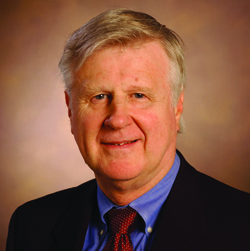New procedure offers surgical option for form of hypertension
A copy repairman who couldn't do his job anymore and was forced to take medical leave has returned to work. A woman who couldn't walk from her car to her desk job has enough energy to redecorate her house. A 42-year-old mother who was too sick to care for her children and was discharged to hospice is now back home with them and busy as ever.
They each came to Vanderbilt Heart & Vascular Institute (VHVI) with chronic thromboembolic pulmonary hypertension and limited options. Until very recently they had two choices: travel to the University of California-San Diego for surgery or take standard medication and hope for the best. One patient opted to drive to San Diego and died of heart failure en route.
VHVI now offers what UCSD offers: a surgical approach to treating this often fatal form of hypertension.
The procedure is called pulmonary endarterectomy and has been performed on 10 patients to date at VHVI, under the skilled hands of Michael Petracek, M.D., professor of Clinical Cardiac Surgery.

Michael Petracek, M.D.
“Many of these patients see a doctor who says there is nothing that can be done for them. We're one of the few medical centers in this part of the country doing this procedure,” he said.
It's a high-risk, complex operation reserved for a specific type of patient. Thromboembolic pulmonary hypertension is caused when blood clots travel to the lungs and never clear. They develop into scar tissue, constricting the pulmonary arteries and making it difficult for blood to flow, resulting in hypertension.
Patients undergoing a pulmonary endarterectomy are placed on the heart-lung machine and the body temperature is cooled to 64.4 degrees Fahrenheit. The chest is opened via median sternotomy.
“They have no blood supply to the brain while I go in and take out scar tissue from their lungs. You have a short period of time to do it,” Petracek said. “I do both sides in 20-minute intervals and relieve their pulmonary hypertension in order to get their heart function back to normal."
Diagnosing the problem is difficult and is confirmed with the use of CT angiography. Patients often present to pulmonologists like Anna Hemnes, M.D., assistant professor of Medicine, or Ivan Robbins, M.D., associate professor of Medicine, with shortness of breath, on oxygen and unable to walk unassisted.
“Most of my patients are profoundly limited. They have had to give up their jobs because they can't do them anymore,” Hemnes said. “To be able to offer surgery here means more expeditious and safer surgery, because the patients aren't traveling when they are really sick.”
The ideal patient is younger than 65 with good organ function who has pulmonary hypertension caused by chronic pulmonary emboli, as opposed to other causes such as heart disease.
“People don't realize there's treatment for this type of pulmonary hypertension. This is one that is very curable, but it requires a big operation that not many medical centers do,” said Petracek, who is training his surgical colleagues on the procedure. “We've got a unique situation because we've got people here who really understand pulmonary hypertension.”













